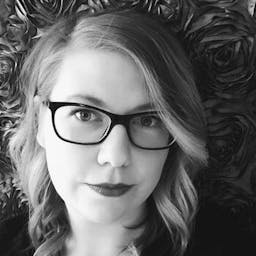Avoid Making a Big TFSA Mistake and Do This Instead
By Heidi Unrau | Published on 04 Dec 2022

Sponsored by BMO Global Asset Management
The Canadian social media influencer has 117,000 TikTok followers, whom she teaches how to manage money. Actually, she focuses on teaching Canadians to use financial tools the right way.
Cassandra believes the Tax-Free Savings Account (TFSA) is one of the most underutilized and misused tools for wealth creation. According to Cass, you can level up your money with one simple hack: stop saving your money and put it to work instead in a TFSA.
Does she mean investing through your TFSA? Yes, she does.
Cassandra, is there a better name for the Tax-Free Savings Account?
“The name is extremely misleading. I think that contributes to the confusion surrounding a TFSA and its purpose,” she explains. Apparently, the TFSA is a victim of poor marketing.
It’s not just a savings account, it’s so much more than that. To use it as a basic savings account means you miss out on the opportunity to grow your money significantly faster, and tax-free.
Cassandra believes that “a TFSA is a powerful investing account where you can invest in a variety of stocks, ETFs, index funds, and more. I like to think of using your TFSA as a savings account similar to buying a Ferrari, only to drive it 40 km an hour.”
Is there a right or wrong way to use a TFSA?
Cassandra knows that there are many ways to open and use a TFSA, depending on your needs and goals. But if you’re looking for long-term growth, she suggests one way a TFSA can kick your money into high gear.
“My personal favourite is to open up a self-directed TFSA. A self-directed TFSA gives you full and complete control over your money, which also means you are responsible for managing your own investments. The great thing about this type of TFSA is that you have way more investment options available to you such as low-fee index funds and ETFs.”
When should Canadians invest?
There’s an old cliché that says “the best time to invest was yesterday. The second best time is today.” Sometimes, cliches are on the nose. As Cass explains:
“In an ideal world, people should start investing as soon as possible. This is because when it comes to long-term investing, compound interest is what grows your money. The longer your money is invested in the stock market, the longer it will compound and the more it could potentially grow.”
Cassandra, what would you tell your 18-year old self about TFSAs?
Confidence and knowledge are the two biggest roadblocks standing between a person and their goals. Cassandra believes you should invest sooner than later, and with the right tools, anyone can do it.
“Most people are able to open a TFSA when they turn 18. If I could tell my 18-year-old self anything, I’d tell her to start reading personal finance books, save some money, and start using her TFSA to invest.
Is investing a good idea for young people?
Cassandra knows it is. “Young people should learn how to invest because, in our modern world, you simply need money to do almost everything. Money buys comfort, convenience, and I would argue most importantly, your time back.
It’s important to realize that investing is a way to do exactly that. For example, starting to invest consistently while you’re young means that your future self may be able to buy their time back, work less hours if they want to, and spend more of their time doing things that they genuinely enjoy.”
What should young people understand about money?
Cassandra learned that It starts with changing your mindset and basically forgetting everything you know about money. Most of the traditional advice didn’t age well. It feels out of touch with what we are dealing with today.
“Trading your time for money at a job isn’t the only way to make money anymore, even though this may be the way our parents are most familiar with. Money is a tool that can work for you. If you set up your finances in a certain way, your money can generate more money without you lifting a finger, such as in the form of compound interest and long-term investing.
Taking control of your money takes some intentional thought and commitment. You need to be willing to make a plan and maybe become more intentional with your spending.
For example, maybe you decide that you want to prioritize investments and make it a goal to save $100 every month to put into an S&P 500 ETF. Maybe you need to tell your friends that your focus over the next 6 months is to save up and build an emergency fund so you won’t be able to spend as much money with them.”
Cassandra, if you could ask a big investment firm anything about investing, what would it be?
“It seems like younger people are flocking more towards online banks and platforms when it comes to investing and savings accounts but still need more education in terms of the right investment solutions. What are you doing to remain attractive to younger generations and educate them?”
That’s a good question. Who is willing to answer it?
What does BMO Global Asset Management say?
We asked Erin Allen, the Vice President of Online ETF Distribution at BMO how she’d answer Cassandra’s question. She had a lot to say and I was surprised by her stance on social media.
Erin, how does BMO try to educate Canadians about investing?
“Actually, BMO is doing a lot to get investment knowledge to everyone, and we found that social media like YouTube is a great way to do it. From an ETF perspective, we add new episodes of our ETF Market Insights every week so that Canadians can just keep learning.”
I checked out some of the videos and they do cover a range of topics and appeal to beginner investors by breaking down the jargon, and covering topics important to them like inflation, how to pick the right ETF, managing market volatility so much more.
Erin, in 2020 alone, 2.3 million Canadians opened self-directed investing accounts on platforms like BMO Investorline. Why do you think that happened?
“With the pandemic in 2020, people turned to online platforms and social media to take back some control over their lives. People realized that they could open investment accounts easily online and find investment information, tools, and a right fit of products to help them grow their money.
For example, BMO ETFs offers a set of tools on our website to help investors screen for, and compare ETFs across the entire universe of Canadian ETFs. Offering this level of transparency goes a long way in satisfying young investors who have the tools they need to make educated decisions.”
Find out more about ETF Tools – ETF Market Insights
So to answer the big question, what can Canadians do with their TFSA instead of using it as a savings account?
Both Cassandra and Erin agree that Canadians need to use their TFSA for tax free investing. ETFs are one way to go that covers nearly all asset classes under one umbrella.
Erin explains it this way: “BMO took care to offer ETFs with different risk levels to suit a range of investors needs. Young and older investors alike love the hands free benefit of them. So, to answer your question, the simplest way to start is with an asset allocation ETF. Remember, asset allocation is the mix between stocks and bonds in your portfolio.”
These ETFs are a one-ticket solution that invests in a number of different ETFs. Also, they are built in a way that matches your risk profile from conservative to all-equity. They are rebalanced back to your desired asset allocation over time.”
What if people want to invest in things they believe in? Is that an option?
That is also a possibility. According to Erin, “Another approach is the core/satellite approach. You could use the Asset Allocation ETF of your choice, like the BMO Growth ETF (ZGRO) as the “Core” and add “Satellite” positions in specific sectors, or themes.”
Themes and satellites? Erin, what do you mean?
“For example, a theme can be Clean Energy, Innovation focused ETFs, or even crypto. One of the most important decisions in building an investment portfolio is the asset allocation. You need to keep in mind these basic ideas:
- having the right mix to fit with the amount of risk you’re comfortable with
- your time horizon on when you will need the money
Do you need to speak with an investment professional to open a TFSA and buy an ETF?
Erin says that, in fact, robo-advisors like Smartfolio can create the portfolio for you based on an investor profile questionnaire that takes into account your investment time horizon and comfort with risk. The good news is all self-directed brokerages offer ETF trading on their platforms with most also providing you tools that can help you select the right ETF.
Erin thinks that a good way to ease into investing is to consult with a financial advisor to ensure you are on the right path to meeting your financial goals. Then you can take that advice and invest on your own if you feel confident in doing so!
What about fees? Don’t fees hurt investment returns?
Erin knows that the industry is going toward different fee structures. ETFs are built to avoid high fees like actively managed portfolios. She also offers some good news.
“Some platforms provide free trading on a select list of ETFs! BMO InvestorLine, for example, offers over 80 ETFs that trade commission free.” That is good news.
Disclaimers:
This article is sponsored by BMO Global Asset Management.
Views expressed regarding a particular company, security, industry or market sector should not be considered an indication of trading intent of any investment funds managed by BMO Global Asset Management or Hardbacon. Any reference to a particular industry is for illustrative purposes only and should not be considered as investment advice or a recommendation to buy or sell nor should it be considered as an indication of how the portfolio of any investment fund managed by BMO Global Asset Management is or will be invested. This social media network is an independent organization and is not affiliated with BMO Global Asset Management.
Commissions, management fees and expenses all may be associated with investments in exchange traded funds. Please read the ETF Facts or prospectus of the BMO ETFs before investing. Exchange traded funds are not guaranteed, their values change frequently and past performance may not be repeated.
For a summary of the risks of an investment in the BMO ETFs, please see the specific risks set out in the BMO ETF’s prospectus. BMO ETFs trade like stocks, fluctuate in market value and may trade at a discount to their net asset value, which may increase the risk of loss. Distributions are not guaranteed and are subject to change and/or elimination.
BMO ETFs are managed by BMO Asset Management Inc., which is an investment fund manager and a portfolio manager, and a separate legal entity from Bank of Montreal.®/™Registered trademarks/trademark of Bank of Montreal, used under licence.
